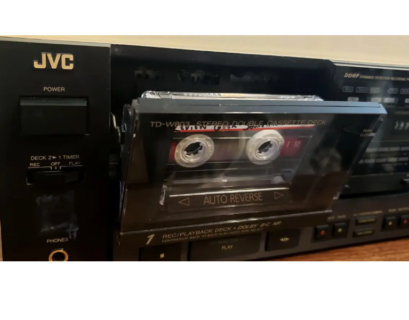It’s the time of year for saving money!
For those old enough to remember, the 1960’s and 1970’s were a unique time to be an audiophile. For most with a superior high end audio system, LP’s were the overriding favorite type of recorded medium. This was a time before streaming, digital and what is today the format wars. It was also a time before vibration control products, five figure audio racks, and speaker cables costing more than a passenger sedan.
In that long ago age, we audiophiles had mostly one thing about which we worried – what record to play next. There were, however, audiophiles living in that rarified air that we now call “world class” audio systems. These were systems costing in the back then range of $50K and up when almost every other system in the high end sold for less than five thousand. Many of those oxygen deprived systems had a component which then as now was thought to be the pinnacle of sonic excellence – the reel to reel (R2R).
Before digital, recordings were made on tape, most using a 2” master. They could then be transferred to a conventional tape or LP format the general public could use and enjoy. Few systems back when had R2R. All who did thought they sounded magnificent. Many were ¼”, 7-1/2 or 15 ips formats that set the bar for recorded media in a home-based audio system. R2R had / has the advantage of greater dynamic range than vinyl yet because still analog, produces the warm, lush sound LP aficionados prefer.
Generally speaking, R2R requires less signal processing which, for the most part, improves sonics. Simply put, in most cases there is less work needed on the master for R2R than an LP – thus improving sonic quality. Digital, of course, has excellent dynamic range, but anyone who prefers analog over digital will side with the (sometimes perceived) warm sound of analog over digital harshness.
Because the R2R format almost evaporated entirely at the dawn of digital, new machines nowadays are difficult to find. There are numerous options for used equipment, but they typically carry an intrinsic quality risk. Very often, a used R2R will need extensive repairs. Finding qualified technicians is no small task either. Because of the scarcity of service parts, and experienced techs, particularly those close by, refurbishing a fifty-year-old R2R may quickly become time consuming and expensive.
There are alternatives, however. Washington, DC area manufacturer / dealer United Home Audio has for years been selling their own version of R2R machines. They range in price from about $19,000 to $26,000 for the machine only. Add options such as a separate power supply and various recording system choices and another $12,000 or more may easily be tacked on.
German manufacturer Ballfinger also sells three different decks, and they also have a very limited selection of tapes as well. To my knowledge, they have no dealers in the US so actually buying one may be a challenge.
Tapes themselves are another issue – namely availability and cost. If you like classical and jazz, you may find a lot more music from which to choose than if you are a country & western or hip-hop fan. Provided actually finding music is possible, have the wallet ready because it will cost – and cost plenty. Most tapes will sell for a $150 to over $500, depending on the artist and length of the tape.
Needless to say, spending $20,000 to $40,000 on a new machine, or the inherent difficulties of a used one, and factoring in the price and limited artist availability of the tapes themselves, it might make one wonder what all the fuss is about. That’s simple.
Sonic excellence.
If audiophiles will do anything, they will unfailingly chase that last vestige of sonic improvement. From simple, cost effective DIY tweaks, to multi thousand-dollar state of the art solutions, to major component upgrades, making a song sound better is of paramount importance. R2R accomplishes that in spades. United Home Audio owner Greg Beron was once quoted as saying “I could hear the pedal squeak every time John Bonham hit the bass drum.” I’m guessing most audiophiles do not typically enjoy that level of detail.
When last audio shows actually walked the Earth, R2R was notably conspicuous. Several of the better sounding rooms had them. At one audio show, I heard a system by Nick Doshi of Doshi Audio with a R2R that absolutely stunned me while listening to classical. It sounded like the symphony was actually in the room. And of course, almost any show will include United Home Audio demoing their lineup of machines. They all sound remarkable.
I suspect even today, where stunningly stratospheric costs for audio equipment is very commonplace, R2R will continue to grow. It seems the rebirth is underway. Audiophiles with the means to afford reel to reel, and the temperament to make it happen, and the acceptance of limited music will incorporate it into their component lineup. They will search high and low for tapes in genres and by artists they like and cherish. They will do what audiophiles have done since the term was invented, pursue increased sonic excellence in a home-based audio system.
There’s certainly nothing wrong with that.















I have two Pioneer R2R decks: RT-1020L and RT-707. I bought the 1020L in 1974 and acquired the 707 from the widow of a neighbor who lived across the street. I have replaced belts and the 707 pinch roller (can’t find one for the 1020L yet). I have also adjusted bias. Flutter is .05% to .07% at 7 1/2 ips. At 3 3/4 it’s a bit worse. I am using them with Advent 100 Dolby noise reduction for recording and for the several prerecorded tapes encoded with it. They still sound great. Just not easy to carry around!